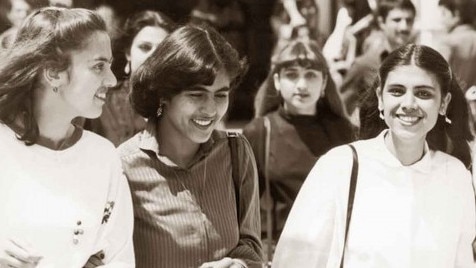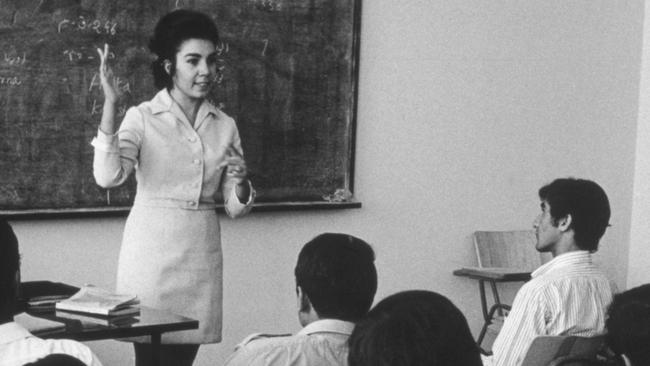Girls run the world in pictures from swinging 70s Kabul
Pictures circulating on social media are a stark contrast with the war-torn sharia law nation we have come to know.

It’s likely you have seen the black-and-white and sepia-toned pictures doing the rounds on social media in recent weeks. Miniskirt-clad Afghan women striding confidently through the city streets and on campus at the university in Kabul with not a hijab in sight.
It’s certainly a stark contrast with the war-torn sharia law nation we have come to know. The pictures are shared in an outcry over the future of women’s rights since the triumph of the Taliban – but there’s also a touch of the Cold War binary there; West is good, East is bad, and surely the aspiration of every woman is to be able to wear a short skirt and makeup.
So what is going on with these pictures? First, they are real, part of a series captured by French photojournalist Laurence Brun during his time in Afghanistan in the early 1970s. The picture below provided by Getty Images states that it was taken in Shar-e-Naü area (the new town) and depicts “a few emancipated girls” who dressed this way. Indeed, many women in Afghanistan at the time looked nothing like this.

In the 1960s, Kabul – much like Tehran pre-Islamic revolution – was a society taking its first tentative steps towards modernity and a more Westernised lifestyle. While much of the rural population still observed more conservative mores, including the covering of women, urban Afghan women began to take off their veils from 1959 in larger numbers after Afghanistan’s Queen Humaira and her daughter, Princess Bilqis, appeared in the royal box at a festival in 1959 unveiled for the first time. The move was controversial at the time and drew some opposition from conservative Kandahari mullahs. But it turned out to be part of a carefully planned strategy by then prime minister Mohammed Daoud Khan to encourage women’s unveiling.
It was the prime minister who cracked down on the mullahs, successfully stifling much of the dissent and paving the way for at least women of Afghanistan’s urban elite and middle class to enjoy more freedoms.
The 1960s was a time of relative prosperity for Afghanistan that was nominally neutral in the Cold War and benefited from the courting of both the US and the Soviet Union. Much of the city’s modernist low-rise architecture was built during this era, when burkas became optional. But that progress stalled in the 1970s — Brun’s pictures were taken in 1972 — amid a series of coups, invasions and civil wars that have continued to this day and reversed many of the modernising trends of the day.

The pictures are certainly powerful. HR McMaster, as national security adviser to Donald Trump, reportedly showed the photographs to the president in 2017, briefly persuading him to recommit to the cause in Afghanistan.
The Times newspaper, reporting on the bizarre episode, noted: “It is easy to mock a president who can be swayed on a subject as serious as war by a single, reductive image of miniskirted women.
“But McMaster, a keen student of history … is right on this: Afghanistan was not always a dark and oppressed place; the country was once progressive and peaceful and is slowly becoming so again. That goal is within reach, so long as American and Britain remain committed to achieving it.”



To join the conversation, please log in. Don't have an account? Register
Join the conversation, you are commenting as Logout